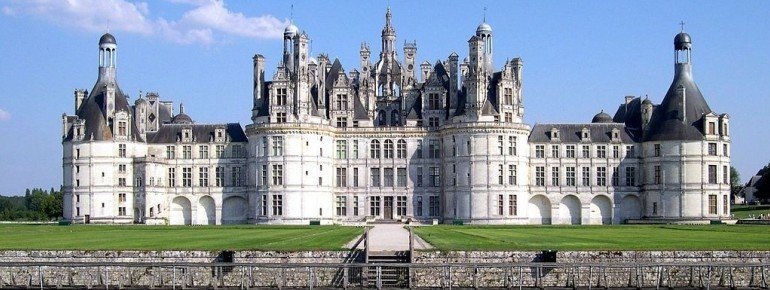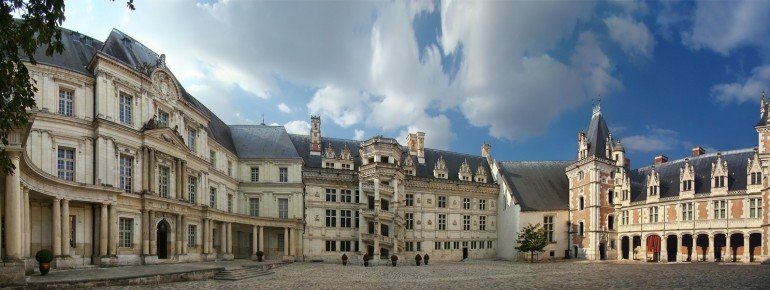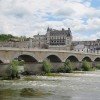Contents
Description
The 21 castles of the Loire valley:
Whilst starting your journey in the west of the Loire river you will reach the Château des ducs de Bretagne (Castle of the Dukes of Brittany) near Nantes first. It was the residence of the Dukes of Brittany between the 13th and 16th centuries, subsequently becoming the Breton residence of the French Monarchy.
Further along the Loire you will see the Château d'Angers. There was a castle situated at this very spot as early as the settlement of the Romans in France. The remains of the castle during Roman times are omnipresent with the castle's massive battlement. Nevertheless, today the castle surprises with a beautiful garden within its walls.
From here the frequency of castles increases dramatically. Namely, the Château de Brissac in the middle of an elegant French garden is to follow. The majestic castle was sold to René de Cossé in 1502 and is the residence of the 13th Duke of Brissac and his successors as of today which is also the reason why only parts of the castle are open for tourists. Moreover, the yearly Val de Loire Festival is held here.
Immediately after you will see a true highlight for every fan of horses: The most famous French Riding School is located across the river from the Château de Saumur. Yet, the castle itself is definitely worth a visit! The castle was often rebuild for different purposes: Being used as a fortress in the beginning, it was later used as a residence for the governors and then even as a prison and weapon arsenal. The restoration was completed during the 20th century and it is home to a city museum today.
Follow the river upstream to reach the Château de Brézé. The construction process of the first predecessor of the castle began in the 11th century and stands as a magnificent rock complex today. The winery around the castle gives the Château de Brézé a romantic touch that continues to amaze its visitors.
A little to the east is the Fontevraud Abbey, one of the largest monastery cities in Europe. The abbey actually served as a prison between 1804 and 1963, but is considered a cultural hotspot today, as many concerts and exhibitions are situated here.
While moving away from the Loire you will reach the Château de Chinon, a rather important place in French and British history: It was right at this very place where Joan of Arc and Charles VII had an historic encounter.
To reach the Château d'Azay-le-Rideau follow the path up to the town of Azay-le-Rideau in the French département of Indre-et-Loire. Set on an island in the middle of the Indre river, this picturesque château has become one of the most photographed images of the Loire valley.
From here just cross the Loire to stand in front of the Château de Langeai. This medieval castle can be split into two parts: On the one side there is the oldest keep in France, with the castle of Louis XI being on the other, both of them are very much worth a visit.
Get back to the southern side of the Loire to get to the Château de Villandry, a castle known for its beautiful gardens. There are three gardens placed on different levels surrounding the castle. Its famous Renaissance gardens include a water garden, ornamental flower gardens, and vegetable gardens.
Furthermore, follow your way towards the south until you reach the old town Loches which lies on the trade route between Amboise and Poitiers. The town, one of the most picturesque in central France, lies at the foot of the rocky eminence on which stands the Château de Loches, the castle of the Anjou family with the old collegiate church of St. Ours.
Going back in the direction of the Loire you will run towards the Château de Chenonceau which lies directly above the Cher river with its beautifully decorated outside walls. After Versailles, it is the most visited castle in the hole of France whilst receiving about 800,000 visitors a year.
Further towards the Loire you will see the Château d'Amboise which, confiscated by the monarchy in the 15th century, became a favored royal residence and was extensively rebuilt. Leading intellectuals and world-known artists have been invited to stay at the chateau, such as Leonardo Da Vinci.
Follow the river upstream once again to get to the Domaine de Chaumont-sur-Loire. It is probably because of the magnificent view from this spot that the yearly Garden Festival “International des Jardins de Chaumont-sur-Loire Festival” is held right here. There is nothing like the view onto the Loire from there.
Next on the way lies the The Royal Château de Blois, where you can find detailed information about all the castles nearby the Loire river. The castle de Blois is a special highlight itself, especially because it comprises several buildings constructed from the 13th to the 17th century around the main courtyard in four different architectural styles.
Then the the royal Château de Chambord is to follow, is one of the most recognizable châteaux in the world. Its very distinctive French Renaissance architecture blends traditional French medieval forms with classical Renaissance structures. The building, which was never fully completed, was constructed by King Francis I of France. The Château de Cheverny is right nearby the Château de Chambord. This castle is known for its marvelous interior decorations.
Go to the south from here to see the Château de Valençay, a castle that is notable for its architectural mix between the renaissance and classical style and also for its nice garden.
Last but not least you will reach the Château de Sully-sur-Loire. The castle represents the gate for the eastern part of the Loire valley and has a very medieval look from the outside. Beware, its moats are still filled with Loire-water.
Interesting facts
- The Loire valley chateaux is among the 10 best rated Tourist Attractions in France.
How to get there
Start the Tour de Loire wherever you please. It will be amazing, no matter where on the Loire you'll start.
Begin in Nantes:
If you decide to start your journey through the castles in the western part of the Loire it is best to take the train to Nantes. There is a highspeed TGV connection to Nantes from Paris. Whilst driving there by car take the A11 highway from Paris, the A83 from Bordeaux, or the RN137 from Rennes.
Begin in Sully-sur-Loire:
Start in Sully-sur-Loire to do the castle tour downstream: However, this place is harder to reach with the train. By car get on the A10 and take the exit “North-Orleans”. Alternatively, take the A77 whilst using exit 18. You will easily find Sully from here.









